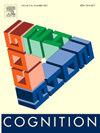概念相似性是几何空间中特征集的聚合
IF 2.8
1区 心理学
Q1 PSYCHOLOGY, EXPERIMENTAL
引用次数: 0
摘要
理解人们如何判断两个概念是否相似是认知科学的一个基本问题,对学习和推理理论也有影响。人类对概念相似性的判断往往与基本度量假设相冲突,导致判断不对称和违反三角不等式等影响。概念结构的经典模型通过将基于集合的逻辑应用于手动构建的概念特征集表示来解释这些效应。概念结构的现代几何模型提供了一种可扩展的、数据驱动的替代方案,但很难通过基于度量的相似性度量来捕捉判断的不对称性。这里我们将介绍一个结合了这两种方法优点的建模框架。我们的方法将概念表示为通过自然语言描述从几何模型中提取的高维特征嵌入集(例如,有腿,喜欢咖啡)。我们提出了一个适合于这种设置的相似函数,并展示了它如何解释经典判断效应。我们在两项研究中评估了这种方法对人类判断的预测:(1)人类在抽象概念(世界各国)之间的相似性判断的行为研究,以及(2)Nelson自由词关联数据集。我们还形式化了我们的方法与Tversky的经典对比模型之间的联系。我们的模型优于其他选择,并建立了一个普遍适用的框架,该框架集成了经典和现代的概念结构方法。本文章由计算机程序翻译,如有差异,请以英文原文为准。
Conceptual similarity as aggregation over feature sets in geometric spaces
Understanding how people judge whether two concepts are similar is a fundamental problem in cognitive science, with implications for theories of learning and reasoning. Human judgments of conceptual similarity often conflict with basic metric assumptions, leading to effects such as judgment asymmetry and violations of the triangle inequality. Classical models of conceptual structure explained these effects via set-based logic applied to manually constructed feature-set representations of concepts. Modern geometric models of conceptual structure offer a scalable, data-driven alternative, but struggle to capture judgment asymmetries via metric-based similarity measures. Here we introduce a modeling framework that combines the merits of these two approaches. Our approach represents concepts as sets of high-dimensional feature embeddings extracted from geometric models via natural language descriptions (e.g. has legs, likes coffee). We present a similarity function appropriate to this setting and show how it can account for classic judgment effects. We evaluate the predictions of this approach against human judgment in two studies: (1) a behavioral study of human similarity judgments among abstract concepts (world countries), and (2) the Nelson free word association dataset. We also formalize a link between our approach and Tversky’s classic Contrast Model. Our model outperforms alternatives and establishes a generally-applicable framework that integrates classic and contemporary approaches to conceptual structure.
求助全文
通过发布文献求助,成功后即可免费获取论文全文。
去求助
来源期刊

Cognition
PSYCHOLOGY, EXPERIMENTAL-
CiteScore
6.40
自引率
5.90%
发文量
283
期刊介绍:
Cognition is an international journal that publishes theoretical and experimental papers on the study of the mind. It covers a wide variety of subjects concerning all the different aspects of cognition, ranging from biological and experimental studies to formal analysis. Contributions from the fields of psychology, neuroscience, linguistics, computer science, mathematics, ethology and philosophy are welcome in this journal provided that they have some bearing on the functioning of the mind. In addition, the journal serves as a forum for discussion of social and political aspects of cognitive science.
 求助内容:
求助内容: 应助结果提醒方式:
应助结果提醒方式:


